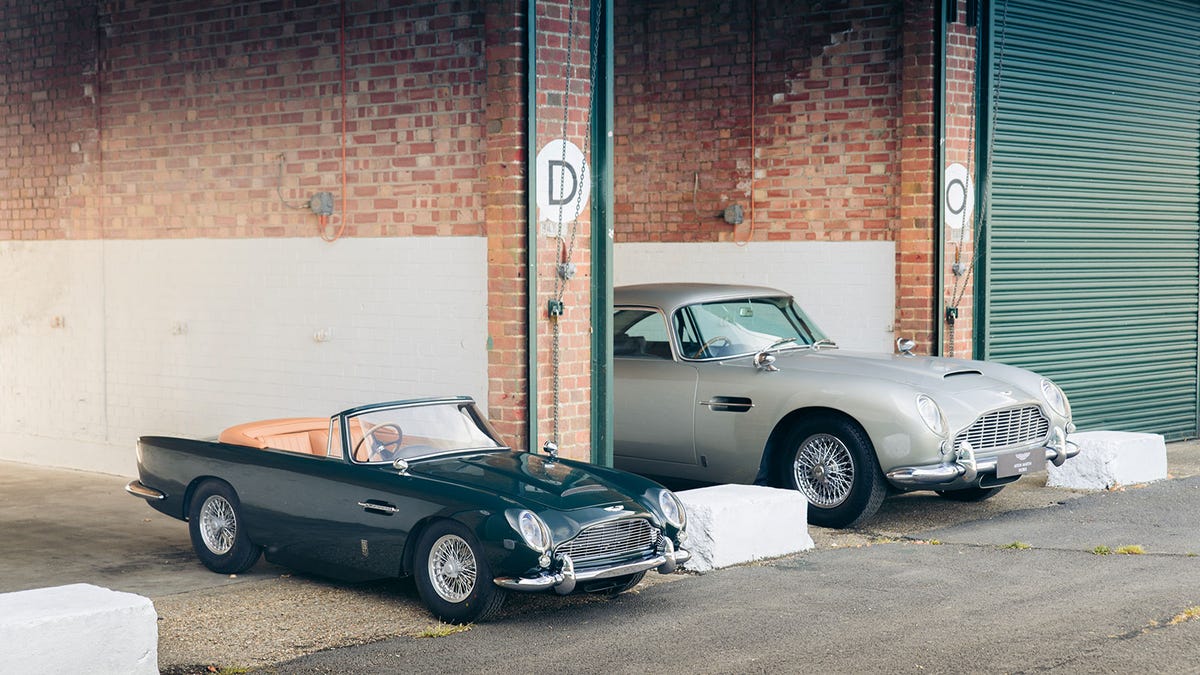The Ferrari, Bugatti and Aston Martin models lined up outside The Little Car Company look immaculate. In the rare British sun that’s shining when I visit the company in Bicester (pronounced Bis-ter), the walk up to its gates feels like a visit to any other global automaker, albeit one with a much more exotic inventory. But as I edge closer to each car, I begin to notice something different about the models on display. On the Aston, the badge is a little too big while the Bugatti’s dials are smaller than you’d expect. As I draw level with a beautiful yellow Ferrari, there’s no escaping it, these are all much smaller than the real things.
Located on a decommissioned Royal Air Force base in the UK, The Little Car Company (TLCC) has built each of these “reinterpretations” of cars like the Bugatti Baby and the Aston Martin DB5. Each one is scaled down and powered by electricity, but still manages to capture the excitement of seeing rare cars like this in person. “We don’t do replicas,” says Ben Hedley, CEO of the company, as he shows me around their facility at Bicester Heritage in Oxfordshire. “I think that’s really important.”
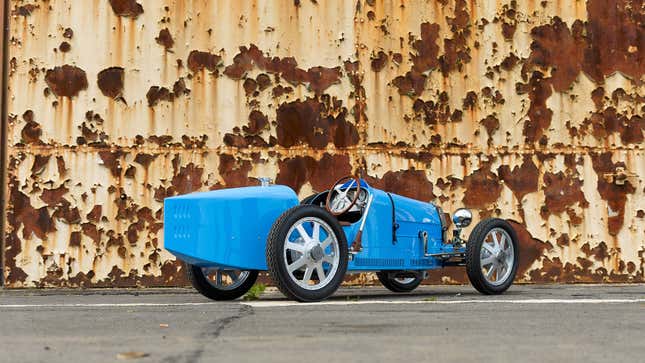
Instead, the company “plays with both the modern and the classic” to create scale models of some of the most famous cars in history. But these aren’t just showpieces to put on display in your home, these pocket-sized creations are fully-engineered electric vehicles that can reach speeds of up to 60 miles per hour.

A self-confessed “lifetime entrepreneur,” Hedley trained as an engineer and always dreamed of being a car designer. Having tried his hand as an importer, shipping in “terrible” quality toy cars from Vietnam, he was about to close up shop when the call came in from Bugatti. “I was about to close it down when I got an email from Bugatti saying ‘hey, I don’t suppose you could help us bring the Bugatti Baby back to life for our 110th anniversary?’,” says Hedley. “I was like, yeah, sure, I’ll give that a go.”
Hedley says Bugatti put a lot of trust in his team, in designing the 75-percent recreation of the historic model. To create and physically make a car considerably smaller than the original, “There’s a massive amount of attention to detail,” says Duncan Gray, commercial director at TLCC. “Things like having the same style of chassis [as the original], so it’s a traditional ladder. Then there are more modern elements like the floor.” In this case, the floor is a lightweight honeycomb sandwich and, in place of the drum brakes on the original, TLCC fits its model with modern disc brakes.

Power-wise, instead of the original single 12 volt electric motor with forward and reverse, the Baby II, as TLCC calls it, comes with a 10 kW motor that produces 13.4 hp and can charge the car up to a top speed of 42 mph. Further modern tweaks include the dashboard, which is a recreation of the one found on the original Type 35 and even has the same dials. But in this smaller application, the fuel pump is now the car’s direction selector, which you use to go forwards or back.
“Something else we’ve carried across, not from the original but from the Chiron is the speed key,” says Gray. “We have a Speed Key and it pops out and releases the full power.”
Once it was finished, the Baby II was showcased at the Geneva Motor Show in 2019, where “everybody just fell in love with it,” recalls Gray. As such, the company committed to a 500-unit run of the car, of which TLCC has built close to 250, at the time of my visit.
Bond, I’ve Been Expecting You
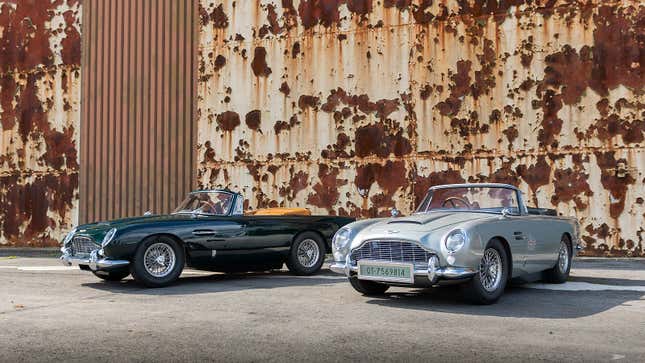
“We were sort of playing around with what we do next? We can’t just make Bugattis and then stop,” says Hedley. “We saw there was so much enthusiasm and we thought there’s an opportunity to do something a bit bigger. The obvious one for me was DB5. I’ve loved Bond since I was a kid and I thought it would be a great one to do.”
The DB5 is larger than the Bugatti, with space inside for two people, but Hedley says it still follows the same ethos of the company’s first car. As such, it’s meticulously engineered and filled with nods to the original. I hop behind the wheel of a forest green example, and it feels wonderful. In my mind at least this is about as cool as it’s ever going to get for me.
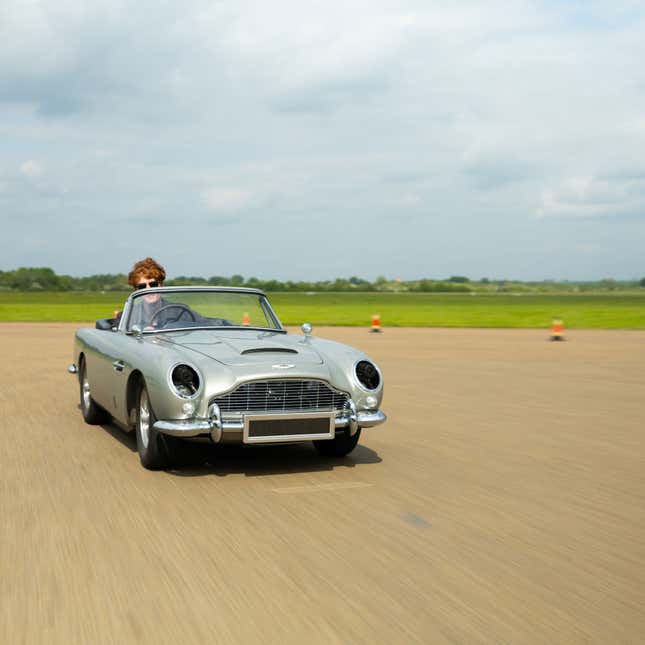
During a test lap around the on-site circuit at Bicester Heritage, the mini version of my dream car is rapid and instantly puts a massive smile on my face. It’s capable of speeds up to 45 miles per hour and has super responsive steering around the track. What’s more, in the hands of the right driver it will even drift around corners. Not bad for something many consider a toy.
“The one thing they don’t say about the DB5 is that it’s a beautiful car, it’s super famous, but it’s not known for its handling,” explains Hedley. “With the Bugatti we have identical geometry, suspension, everything to the original. But with this one, it’s not. Aston Martin lent us a Vantage, the modern one, and we used that as our starter. So now we can go sideways in this one. It’s brilliant. It’s a hooligan machine.”
When it comes to engineering these “reduced size” models, TLCC leaves no stone unturned in pursuit of perfection. Across its cars, you’ll find brakes taken from Ducati motorcycles, as well as parts sourced from established firms like Bilstein, which makes TLCC’s dampers, and Eibach, where it gets its suspension components. In the Aston, you’ll even find the same Smiths gauges that are on the original car. These really are proper cars, just little.
To take things up a notch, TLCC even sells a James Bond-inspired model, which comes with more power, quicker acceleration and gadgets taken straight from the No Time To Die DB5. We’re talking smoke screens, imitation machine guns up front and a number plate that can change on command.
Despite all the changes made to this recreation, the DB5 Junior is still certified by Aston Martin, which even sent its test driver Darren Turner down to TLCC to “spank” one around the track.
When Ferrari Invites You To Maranello
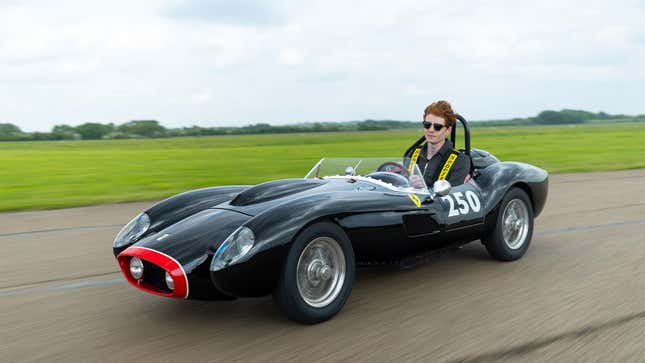
Then there’s TLCC’s Ferrari Testa Rossa J, created via a direct partnership with Ferrari.
Hedley says Ferrari allowed the company into Maranello, and its esteemed Ferrari Museum, where the team was able to scan the original paper drawings of the 1956 chassis. They used those scans to build a model of the 250 Testa Rossa, which can be ordered with a race-ready Pacco Gara pack that increases the power to 14 kW, ups the top speed to 55 mph and even adds a roll cage. Thanks to its drilled disc brakes, quicker steering and adjustable dampers it feels ready to take on any race track, despite being just ten feet long.
“For them, it’s become a chance to have a bit of fun outside of the sort of normal straight-faced car making,” says Hedley. “Also, it’s bringing on the next generation of customers. If you learn to drive one of these, your brand loyalty for life will always be to Ferrari.”
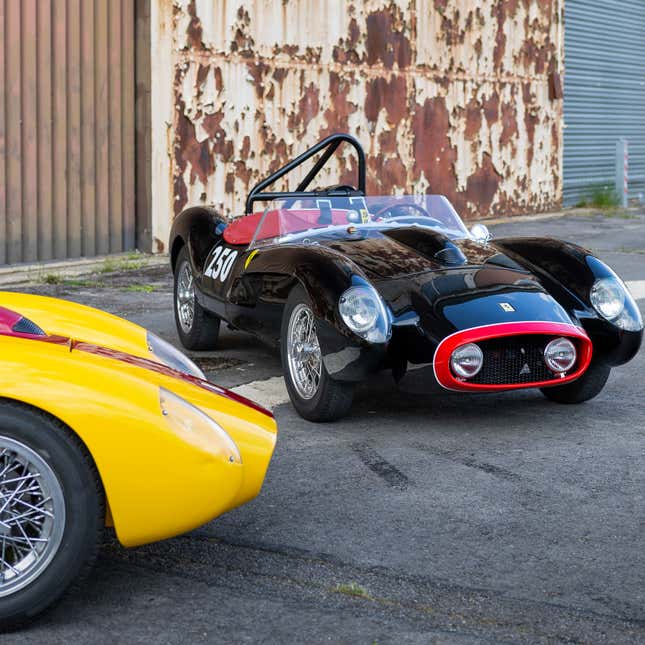
The company even has stories of buyers matching their Testa Rossa J from TLCC with the full-size Ferrari that they have in their garage at home.
“With Ferrari, we do that more than anything else,” says Grey. “We’ve got a range of standard colors, standard Ferrari colors, and then there’s the historic liveries. But then, we also go through the Atelier Ferrari program and if they have an existing car that they want to match to we can get that.”
On To Bigger And Badder Things
The Little Car Company has made a name for itself putting the fun back into classic car ownership with its scaled down recreations. However, for its next trick, Hedley and the team have taken a new approach to injecting an ounce of enjoyment into driving.
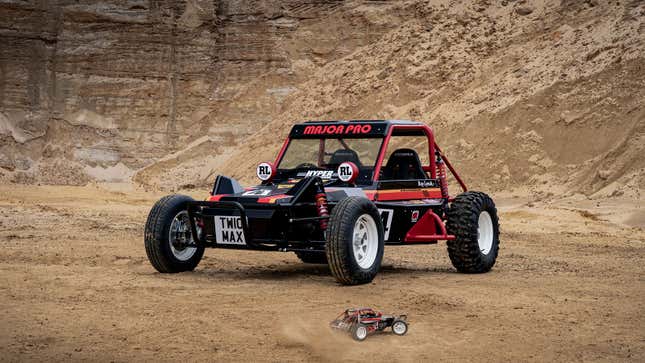
“This is a bad ass,” says Hedley as we uncover the company’s new Tamiya Wild One Max, which, as the name suggests, is no longer a scaled down model of a historic car. Instead, the Wild One takes the beloved remote control off-road buggy that Tamiya shipped in the 1980s and makes it big enough for two, real, full-size humans to drive. Because of its off-road origins, the Wild One comprises a rugged frame that surrounds the driver and their passenger. Then, there are massive, knobbly tires at each corner to maximize traction and huge shocks to soak up the bumps when you hit the trails.
“I came up with the idea while I was looking at the bill of materials for the Aston,” explains Hedley. “It is so expensive to build. So I thought, ok, how can we have a simpler car, and how can we design it to keep the cost down? Now, rather than taking a big car and making it a bit smaller, we take a small car and make it full size.”
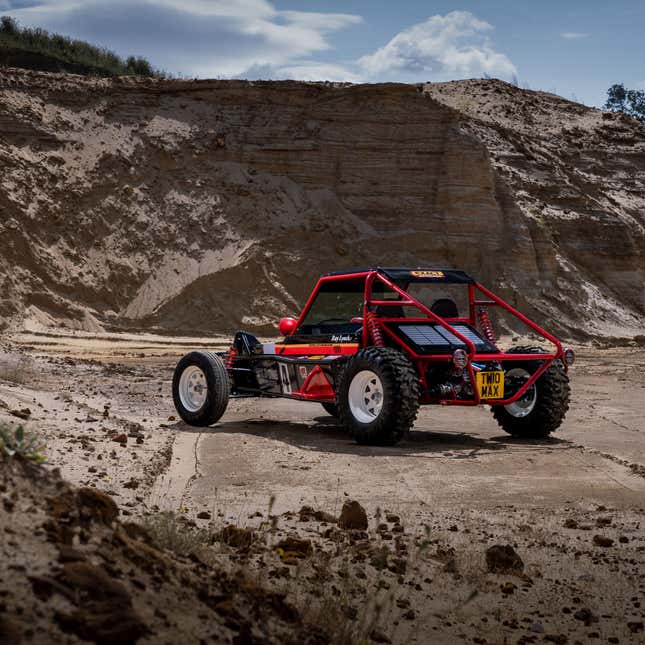
Hedley says he always loved the Tamiya RC cars when he was growing up, so it was the logical choice when it came to choosing a model to supersize.
“This one is a bit more,” says Hedley. “It’s still low voltage, 48 volts, but has a top speed of 60 mph and we think it will do 100 miles. Again, we always work with Bilstein and this has got Eibach springs, Bilstein dampers, Brembo disc brakes.”
Bad ass is definitely the way to describe the Wild One, especially when you learn that the off-roader will be fully road legal in the UK and Europe, where it will retail for £35,000 (about $45,000), which makes it roughly the same price as the electric Fiat 500 that I drove down to see it.
Unique to the Wild One, compared to every other model at TLCC, is that it will be a full run, rather than a limited production – that is, once the first 100 Launch Edition models have been finished. For the more handy folks, the Wild One will also be available to buy as a kit that you can build, complete with a mammoth sticker set for you to apply yourself.
Sure, the size difference between the Baby Bugatti II and the Wild One is considerable, but it’s not pointing to change in direction for the firm. Hedley says the Wild One and its unlimited production may spark a second company, like “The Fun Car Company” . He still has big ambitions for The Little Car Company and its range of scale models. In fact, the team is already working with Bugatti and Ferrari on new cars, and has other automakers lined up to collaborate.
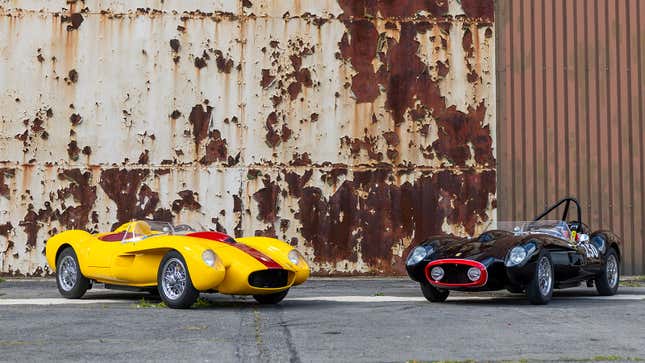
“We want to be creative,” says Hedley. “We don’t want to just replicate the same thing again, and again, and again, because people get bored.”
After an afternoon with The Little Car Company, I think it’s safe to say that you’re unlikely to get bored if you ever find yourself behind the wheel of one of Hedley’s creations.

